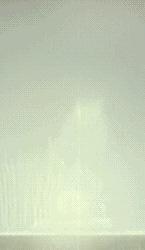Nuclear explosion facts for kids

A nuclear explosion happens when a huge amount of energy is suddenly released from a very fast nuclear reaction. This powerful burst of energy can come from two main types of reactions: nuclear fission or nuclear fusion, or sometimes both at once.
When a nuclear explosion happens in the air, it often creates a huge, cloud shaped like a mushroom. However, other big explosions, even non-nuclear ones, can also make mushroom clouds. It's also possible for a nuclear explosion to happen in the air without forming one of these clouds. Nuclear explosions also produce radiation and tiny pieces of material that are radioactive.
Contents
How Nuclear Explosions Work
Nuclear explosions are different from regular explosions because they use the power hidden inside the center of atoms.
Fission Explosions
Fission means "splitting apart." In a nuclear fission explosion, heavy atoms like uranium or plutonium are split into smaller pieces. When these atoms split, they release a lot of energy and also release tiny particles called neutrons. These neutrons then hit other atoms, causing them to split too. This creates a super-fast chain reaction that releases an enormous amount of energy in a tiny fraction of a second.
Fusion Explosions
Fusion means "joining together." In a nuclear fusion explosion, very light atoms, like different types of hydrogen, are forced to combine or fuse together. This process releases even more energy than fission. Fusion explosions need extremely high temperatures and pressures to start, which are usually created by a smaller fission explosion acting as a trigger.
The First Nuclear Bombs
The first time a nuclear weapon was used in a real battle was on August 6, 1945. The United States dropped a bomb made of uranium on the Japanese city of Hiroshima.
Just three days later, on August 9, 1945, the United States dropped another nuclear weapon. This time, it was a bomb made of plutonium dropped on the Japanese city of Nagasaki. These two bombings caused the immediate deaths of about 120,000 people. Many more people died later because of the harmful radiation from the explosions.
Effects of a Nuclear Explosion
Nuclear explosions create several dangerous effects.
Heat and Blast
First, there's an incredibly powerful blast wave, like a giant push of air, that can destroy buildings and objects over a large area. Second, there's intense heat, much hotter than the surface of the sun, which can cause severe burns and start huge fires.
Radiation and Fallout
Third, nuclear explosions release a lot of radiation. This radiation can harm living things and cause serious illnesses. Fourth, they create something called "radioactive fallout." This is dust and debris that becomes radioactive and then falls back to Earth, spreading dangerous material over a wide area.
See also
 In Spanish: Explosión nuclear para niños
In Spanish: Explosión nuclear para niños

